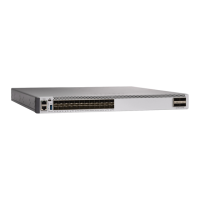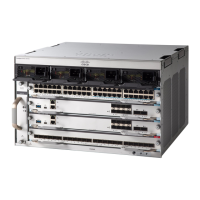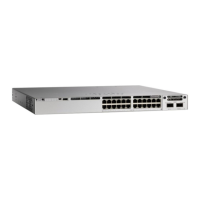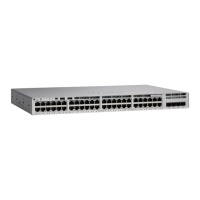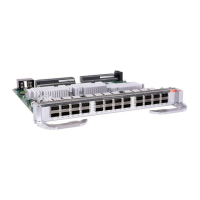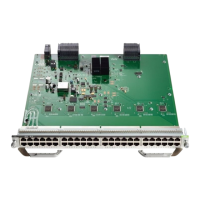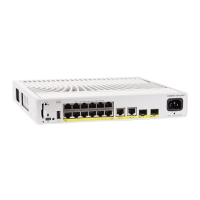The switch retains static routes until you remove them. However, you can override static routes with dynamic
routing information by assigning administrative distance values. Each dynamic routing protocol has a default
administrative distance, as listed in Table 41-16. If you want a static route to be overridden by information
from a dynamic routing protocol, set the administrative distance of the static route higher than that of the
dynamic protocol.
Table 20: Dynamic Routing Protocol Default Administrative Distances
Default DistanceRoute Source
0Connected interface
1Static route
5Enhanced IRGP summary route
90Internal Enhanced IGRP
100IGRP
110OSPF
200Internal BGP
225Unknown
Static routes that point to an interface are advertised through RIP, IGRP, and other dynamic routing protocols,
whether or not static redistribute router configuration commands were specified for those routing protocols.
These static routes are advertised because static routes that point to an interface are considered in the routing
table to be connected and hence lose their static nature. However, if you define a static route to an interface
that is not one of the networks defined in a network command, no dynamic routing protocols advertise the
route unless a redistribute static command is specified for these protocols.
When an interface goes down, all static routes through that interface are removed from the IP routing table.
When the software can no longer find a valid next hop for the address specified as the forwarding router's
address in a static route, the static route is also removed from the IP routing table.
Configuring Static Unicast Routes
Static unicast routes are user-defined routes that cause packets moving between a source and a destination to
take a specified path. Static routes can be important if the router cannot build a route to a particular destination
and are useful for specifying a gateway of last resort to which all unroutable packets are sent.
Follow these steps to configure a static route:
Routing Configuration Guide, Cisco IOS XE Everest 16.6.x (Catalyst 9500 Switches)
184
Configuring IP Unicast Routing
Static Unicast Routes

